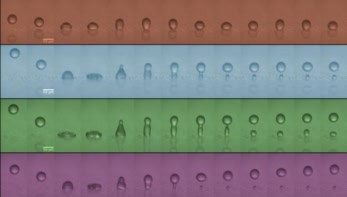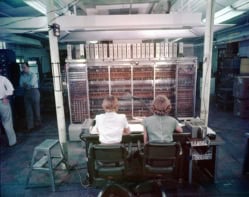Ahead of the 2024 Nobel Prize for Physics, Physics World editors recall amusing brushes with Nobel laureates past and present. Tushna Commissariat recalls meeting and interviewing Roger Penrose
As a young physics student, I spent the summer of 2004 toting around Roger Penrose’s The Road to Reality: A Complete Guide to the Laws of the Universe. It was one of the most challenging popular-science books I had ever come across, and I, like many others, was intrigued by Penrose’s treatise and his particular ideas about our cosmos. So I must admit that nearly a decade later, when I had the opportunity to meet the man himself at a 2015 conference hosted by Queen Mary University London, I was still somewhat starstruck.
The conference in question was one celebrating “Einstein’s Legacy: Celebrating 100 years of General Relativity”, and included scientists, writers and journalists who gave talks on everything from the “physiology of GR” to light cones and black holes. Penrose was one of the plenary speakers on a Saturday evening and I was promptly amused when he began his talk on “Light cones, black holes, infinity and beyond”, with a rather beautiful if extremely old-school transparency. Those who had attended his talks before (and indeed even to this day) already knew of this particular habit, as Penrose famously dislikes slides and prefers to give his talks with his own hand-drawn colourful sketches – in fact, I’ve never seen quite such a colourful black hole! In my blog from 2015, I described the talk as “equal parts complex, intriguing and amusing”, and I recall thoroughly enjoying it.
As any good science journalist would, I attempted to speak with him after the talk, but he was absolutely mobbed by the many students and other enthusiastic scientists at the event. So I decided to bide my time and attempt to catch him at the dinner after, where he again held court with all the QMUL students who hung on to his every word. It was only after 10 p.m. that I managed to get him alone to interview him. My colleague and I set up a camera in a quiet classroom and as we asked Penrose our first question on cosmology, a deep rumbling sound took over the room – a District and Hammersmith tube line runs past most of the classrooms at the campus.
We spent most of the interview stopping and starting and attempting to perfectly time when the next tube would rumble past. Penrose was extremely patient despite how late it was, and the fact that he had been talking for hours already. The many interruptions to filming did mean that we had the chance to chat casually with him, and though I cannot recall the exact details, the conversation was equal parts fascinating and rambling, as we went off on many tangents.
You can watch the final version of my interview with Penrose above, to learn more about who inspired him, his views on the future of cosmology, and how his career-long interest in back holes – which won him the 2020 Nobel prize – first began.

SmarAct proudly supports Physics World‘s Nobel Prize coverage, advancing breakthroughs in science and technology through high-precision positioning, metrology and automation. Discover how SmarAct shapes the future of innovation at smaract.com.



